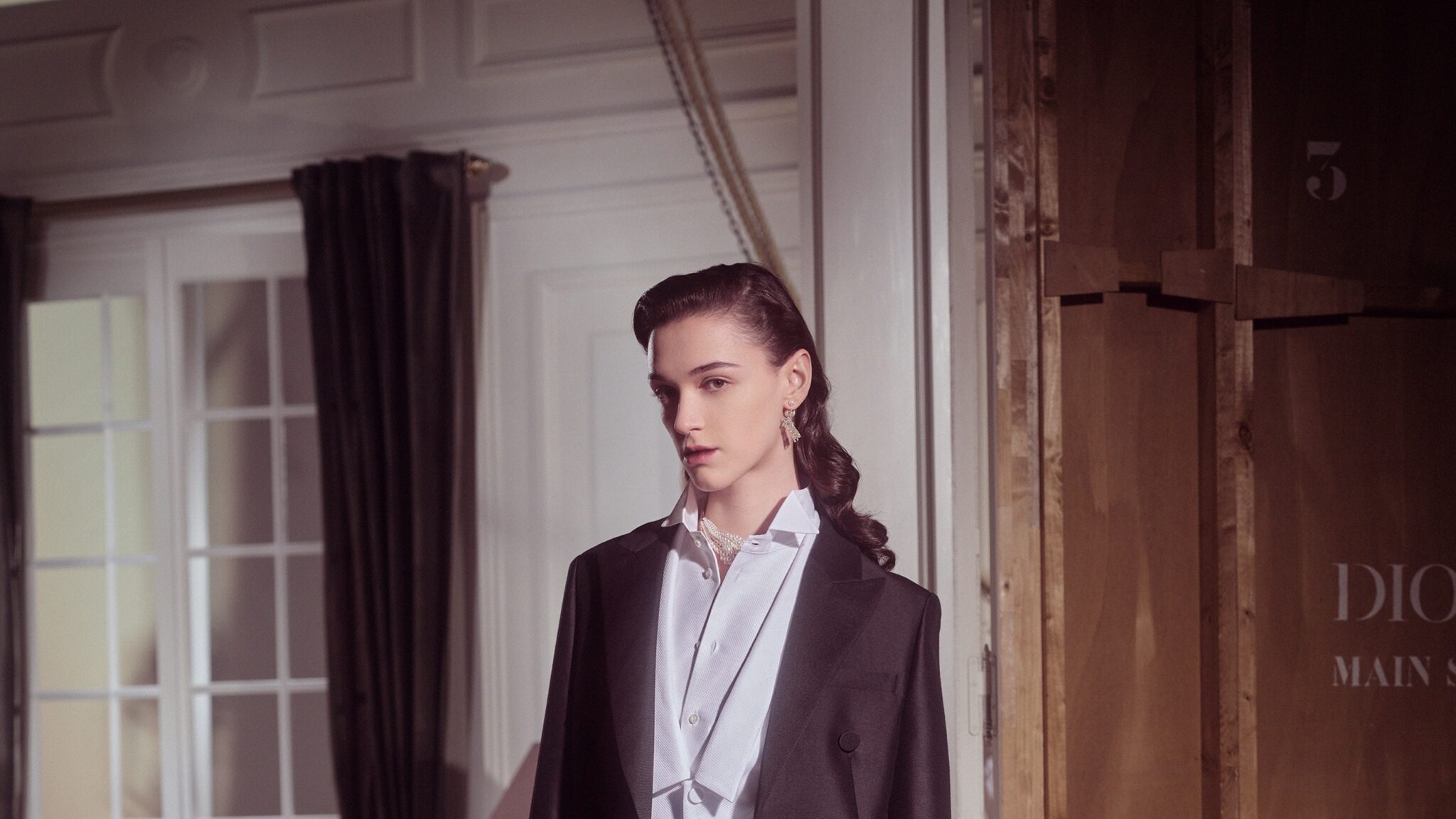Maria Grazia Chiuri’s fall mood board features images of Marlene Dietrich in her signature suits. The actress was a client of Christian Dior, and that connection appealed to Chiuri. She has made a habit of studying not only the archives of the house’s founder but also the women he dressed in her quest to build a better understanding of the brand’s lived or embodied history.
“I think her look was very modern and contemporary,” Chiuri said, explaining her attraction to Dietrich. “She had the idea to really consciously play with fashion, she understood that very early.” The star’s gender-bending costumes in films like Morocco gave Chiuri a reason to add ties to crisp cotton poplin shirts and style some looks with fedoras; the Bar-style jacket she wore in a famous 1950 publicity campaign continued to be modernized with updated, more streamlined lapels. Elsewhere, an off-the-shoulder hourglass dress was reminiscent of a similar style Dietrich wore to the Oscars in 1951, and a long dress with 3/4 sleeves and a black-and-white diamond motif was modeled after a dress she was photographed in. decades earlier by couturier Lucien LeLong, to whom Dior apprenticed.
In addition to photos of the film legend, the mood board contains an excerpt from the fashion trade publication Women’s Wear Daily. Not long after Dior established his home in France, he set up a parallel company in the United States. Dior New York made different clothes than its Parisian ateliers, more Americanized and casual. As befitted the lifestyle here, Dior’s American contemporaries—female designers including Elizabeth Dawes and Claire McCardell—invented a category called sportswear, which rejected the formality and form-fitting structure for which the French were famous.
This reference was the other accent of the collection and formed the basis for the generously cut chinos and pop-over tops, the leisure suits with Dior monogram and the dark denim jeans whose raised cuffs revealed the house logo. Landmarks from Paris and New York, such as the Eiffel Tower and the Statue of Liberty, were applied as decorative motifs, joining the map print discovered in Dior’s archives and revived by Chiuri into a now recognizable brand code. The main nod to Dior’s New York production is difficult to decipher in photos, but during a Zoom call, Chiuri made a point to emphasize the comfort factor and versatility of using jersey for hourglass dresses and knits for voluminous skirts in years’ 50s style. “I think that gives a sense of freedom,” she said.





